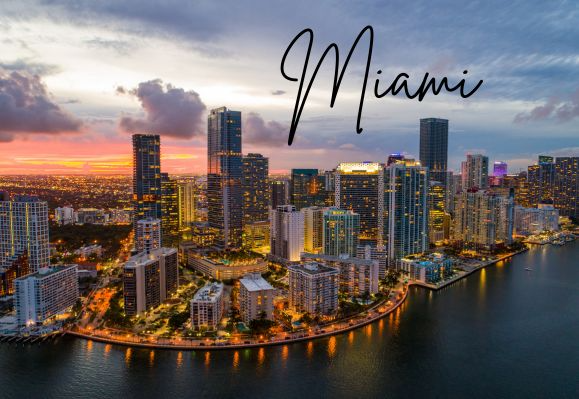Book Your Dream Flight with flighys
Home » Flights
Miami may be synonymous with modern beaches, Art Deco glamour, and contemporary nightlife, but this tropical metropolis holds layers of fascinating history that span millennia. From ancient Tequesta settlements to Spanish exploration, from pioneer homesteading to railroad development, from Prohibition-era smuggling to Cold War espionage, Miami offers history buffs a unique journey through time in one of America's most internationally influenced cities. The Magic City's historical neighborhoods and landmarks reveal how geography, climate, and cultural convergence created a distinctive American story unlike anywhere else in the nation. Safely land these with Flighys.

The Miami Beach Art Deco Historic District contains the world's largest concentration of Art Deco architecture, representing a pivotal moment when Miami transformed from a quiet resort town into an international destination. Built primarily between 1923 and 1943, these pastel-colored buildings with their distinctive geometric designs, nautical motifs, and tropical flourishes created a uniquely American interpretation of the Art Deco movement.
Little Havana: Cuban Exile History and Culture
Little Havana is both a lively cultural district and a living testament to one of the most important migrations of refugees in American history. After the Cuban Revolution of 1959, hundreds of thousands of Cuban exiles arrived in Miami, changing Miami's demographics, politics, and culture but creating a community that maintained Cuban traditions while living in exile.
Coconut Grove: Miami's Bohemian Pioneer Settlement
Coconut Grove represents Miami's oldest continuously inhabited neighborhood, with a history that predates the city's incorporation by decades. Established in the 1870s by an eclectic mix of Bahamian immigrants, American pioneers, and intellectuals seeking a tropical retreat, the Grove developed as Miami's most cosmopolitan and racially integrated community.
Downtown Miami and the Miami River: From Trading Post to Metropolis
The Miami River and downtown area contain the physical evidence of Miami's transformation from a Tequesta Indian trading post to a modern international city. The river served as the lifeline for indigenous peoples for over 2,000 years before Spanish exploration and eventual American settlement.
Virginia Key and Key Biscayne: Segregation and Integration History
Virginia Key and Key Biscayne preserve important chapters in Miami's civil rights history while showcasing the area's role in Cold War events. Virginia Key Beach Park was the "colored beach" for Miami during the era of segregation, when African Americans could not enjoy waterfront recreation in Miami Beach because it was essentially off-limits.
The beach served as a critical site for civil rights activism and community building as it sheltered events uniting Miami's African American community through legal segregation. The restored bathhouse and pavilion exemplify the creation of separate facilities in support of segregation, while also providing leisure and recreation.
Conclusion: Miami as America's Tropical Crossroads
Miami offers history buffs a unique perspective on American urban development in a tropical setting, where climate, geography, and international influences created a city unlike any other in the United States. From ancient Tequesta settlements to contemporary international commerce, Miami's history reflects the challenges and opportunities of building a modern city in an environmentally challenging location while serving as America's primary connection to Latin America and the Caribbean. Explore this city with Flighys.
Read more:- Click Here